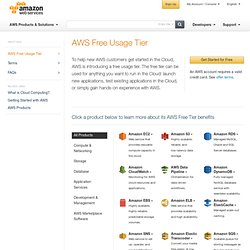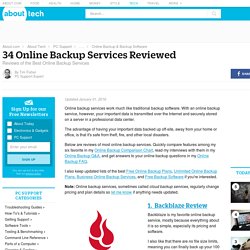Cloud technology
> Clarewc20
What is Cloud Computing : Types of Services and Deployment - India.
Cloud storage
Wiki spaces. Online FTP Hosting and Cloud Storage Services – Sign Up For A Free Trial. Cloud Computing News, Blogs & Strategy, IaaS, SaaS, PaaS & Virtualization. CRM, Web Based Customer Relationship Management Software. Copy. Itreports.spiceworks.com/reports/spiceworks_voice_of_it_pertino_iaas.pdf. The Charity Cloud - Cloud Computing for Charities and Non Profit Organisations. Try Cloud Computing Free with AWS Free Tier. 750 hours of ELB per Month Data Processing Amazon Elastic Load Balancing distributes incoming application traffic across multiple Amazon EC2 instances, providing greater fault tolerance and scalability.

The AWS Free Tier includes 750 hours of load balancing and 15 GB of data processed. Learn more about Amazon ELB »Create an AWS account » of EBS Storage 2 Million I/Os of Snapshot Storage Amazon EBS (Amazon Elastic Block Store) provides highly available, highly reliable, predictable storage volumes that can be attached to a running Amazon EC2 instance. Learn more about Amazon EBS »Create an AWS account » Standard Storage Get Requests Put Requests Amazon S3 (Amazon Simple Storage Service) provides a simple web services interface that can be used to store and retrieve any amount of data, at any time, from anywhere on the web. Learn more about Amazon S3 »Create an AWS account » Micro DB Instance. People, process, organization and governance for the software-defined data center. By Jason Stevenson You have heard it said that “rock and roll is dead.”

The same could soon be said about your IT department. External pressures are driving an extinction of the IT department. Today’s business users are becoming more and more savvy, growing up with all kinds of technology in both the home and the office. Desk-side computing is dying off quickly, being left behind by technologies—like tablets, smart phones, and even wearable technology like eyeglasses and wristwatches—that make your employees more mobile and agile. The movement toward mobility and agility naturally drives organizations toward more cloud-based services, and software as a service (SaaS) rather than customized applications.
Today’s business managers need to move at the speed of technology, and often consider the IT department a hindrance more than anything else. 1. Shifting your focus from technology to service management, you act as broker of the cloud services available within the marketplace. 2. 3. 4. 5.
Zimbra offers Open Source email server software and shared calendar for Linux and the Mac.
26 Online Backup Services Reviewed (Updated July 2013)
9.

Livedrive Review Livedrive is an online backup service that offers an interesting mix of backup plans, a cost effective way to add computers, and a really nice computer and mobile app interface. Livedrive "Backup" and "Pro Suite" are the two backup plans you can purchase. They both offer unlimited online backup, but the "Backup" plan only supports backing up 1 computer, whereas the "Pro Suite" can backup up to 5 computers. Livedrive "Backup" runs $8.00 /month, and "Pro Suite" is $25 /month.
All Livedrive online backup plans offer significant discounts if you prepay for one year. Another plan offered by Livedrive is called "Briefcase," and is just an online storage plan that offers 2 TB of space - it doesn't back up your files like a regular backup plan. If you purchase the "Pro Suite" plan, you get 5 TB of the "Briefcase" plan included, plus its added features.
Security
Online services. The 10 Laws of Cloudonomics. If your enterprise has access to the same things — virtualization, automation, performance management, ITIL, skilled IT resources, etc. — as cloud service providers, would clouds provide any real and sustainable benefit?

Public utility cloud services differ from traditional data center environments — and private enterprise clouds — in three fundamental ways. First, they provide true on-demand services, by multiplexing demand from numerous enterprises into a common pool of dynamically allocated resources. Second, large cloud providers operate at a scale much greater than even the largest private enterprises. Third, while enterprise data centers are naturally driven to reduce cost via consolidation and concentration, clouds — whether content, application or infrastructure — benefit from dispersion.
These three key differences in turn enable the sustainable strategic competitive advantage of clouds through what I’ll call the 10 Laws of Cloudonomics.




